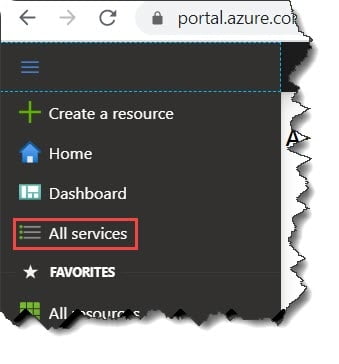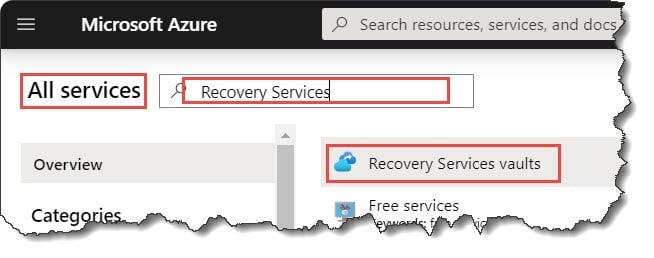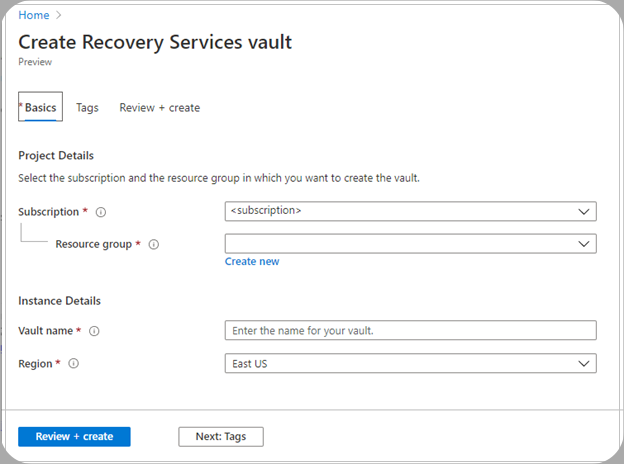In this blog, we are going to cover What is Azure Recovery Services Vault, the Features of Recovery Services Vault & how to Create and Delete Azure Recovery Services Vault.
The topics covered in this blog are:
- What is Azure Recovery Services Vault?
- How to Create Azure Recovery Services Vault
- How to Delete Azure Recovery Services Vault
- How to Set Storage Redundancy for the Services Vault
- How to Set Cross-Region Restore for the Services Vault
- How to move Azure Recovery Services Vault to different Resource Group
- How to move Azure Recovery Services Vault to a different Subscription
- Azure Recovery Services Vault Features
- Azure Recovery Services Vault Limitations
- Azure Recovery Services Vault Pricing
- Conclusion
- FAQs
What is Azure Recovery Services Vault?
The Azure Recovery Services vault includes Azure Backup and Site Recovery, two services that let you to secure your data outside of your own data center. Azure Recovery Services Vault is a storage object that can hold or arrange your backup data in an organized way. The data that can be stored here is, VMs configuration information, backup of your workstation and Azure SQL databases, etc.
Azure Site Recovery gives you a failover option for your server architecture, without the requirement to establish a second data center or rent any rack space. Azure Recovery Services vaults support System Center DPM, Azure Backup Server, Windows Server, and more. Azure Recovery Services vaults make it simple to arrange your backup data while reducing administration overhead.
How to Create Azure Recovery Services Vault
Follow the below steps to create a Recovery Services vault in the Azure portal.
1. Log in to the Azure portal.
2. On the left side menu bar, click on the “All services” option.

3. Now search for the “Recovery Services” in the search box and click on the “Recovery Services vaults”.

4. On the next page click on Add button.

5. Now, on the Create Recovery Services vault window, Select the following details:
- Subscription
- Resource group
- Vault name
- Region

and then click on the Review + Create button.
6. Then click on the Create button.

7. Now it will show that the deployment is completed. You have successfully created the Recovery Services vault in the Azure portal.
Also Check: Our blog post on Azure Certification Path
How to Delete Azure Recovery Services Vault
- Log in to the Azure portal
- Open the list of Recovery Services vaults and open the vault you wish to delete.
- Open the vault dashboard and click on the delete button.
- Before deleting your vault make sure there are no dependencies on your vault. if there are dependencies then first you have to Remove vault dependencies.
- From the Backup Items menu, remove the following dependencies:
- Azure Storage backups
- SQL Server in Azure VM backups
- Azure virtual machines backups
- From the Backup Infrastructure menu, remove the following dependencies:
- Microsoft Azure Backup Server backups
- System Center DPM backups
How to Set Storage Redundancy for the Services Vault
Azure Backup automatically manages storage for the vault. You need to define how that storage is replicated. You can set the storage replication type between the two
- Geo-redundant
- Locally-redundant
Geo-redundant storage replication is selected by default. If you want you can alter it to Locally-redundant. To do so, just follow the steps described below.
1. Sign in to the Azure portal
2. Open the list of Recovery Services vaults and choose the vault you wish to move.

3. Then click on properties under the Settings section and then click on Update under the Backup Configuration option.

4. On the next window (Backup Configuration), select the Storage replication type and then click on the Save button.

Note: It is advised to choose the Geo-redundant (Default) as the Storage replication type.
Check Out: Azure Data Factory Interview Questions and Answers
How to Set Cross-Region Restore for the Services Vault
The Cross Region Restore option lets you to restore data in a secondary, Azure paired region. You can utilize Cross Region Restore to perform drills when there’s an audit or compliance need. You can also utilize it to recover data if the main area (primary region) suffers a disaster.
You can follow the following steps to configure cross-region to restore for the services vault.
1. Open the list of Recovery Services vaults and choose the vault for which you want to set the cross Region Restore.
2. Then click on properties under the Settings section and then click on Update under the Backup Configuration option.
3. On the next window (Backup Configuration), select the Storage replication type as “Geo-redundant” and then click on the Enable button under the Cross-Region Restore Section.

4. Now, click on the Save button.
Also Read: Our blog post on Azure Firewall
How to move Azure Recovery Services Vault to different Resource Group
You can follow the following procedures to move a Recovery Services vault and its related resources to another resource group.
1. Log in to the Azure Portal and access the Recovery services vault that you wish to move to a new resource group.
2. Now on the Overview tab, click on the Essentials option and then click on the “change” next to the Resource Group.

3. Select the optional related resources and then select another existing Resource group (or create the new one) from the dropdown.

4. Now select the check box and click on the ok button.
How to move Azure Recovery Services Vault to a different Subscription
You can follow the following procedures to move a Recovery Services vault and its related resources to another subscription.
1. Log in to the Azure Portal and open the Recovery services vault that you want to move to a different Subscription.
2. Now on the Overview tab, click on the Essentials option and then click on the “change” next to the Subscription.

3. On the next window, select another subscription and then click on the Ok button.
Read More: About Microsoft Azure Security Center
Azure Recovery Services Vault Features
Azure Recovery Services vault is built on the Azure Resource Manager model of Azure, which provides many features such as:
1. Enhanced Capabilities to Help Secure Backup Data: With Recovery Services vaults, Azure Backup delivers security options to safeguard cloud backups. The security features guarantee that your backups are secure and that you can securely restore data even if your production and backup servers are hacked.
2. Central Monitoring for your Hybrid IT Environment: Azure Recovery Services vaults allow you to manage not just your Azure IaaS VMs but also, you’re on-premises assets via a single interface.
3. Azure Role-Based Access Control (RBAC): In Azure, Azure RBAC enables fine-grained access management control. Azure has numerous built-in roles, including Azure Backup features three built-in roles to handle recovery points. Azure Recovery Services vaults are compatible with Azure RBAC, which limits backup and restore access to the stated set of user roles.
4. Soft Delete: Even if a malicious actor deletes a backup, the backup data is maintained for an extra 14 days using soft delete, enabling the backup item to be recovered with no data loss.
5. Cross-Region Restore: Cross Region Recover (CRR) enables you to restore Azure VMs in a secondary region, which is an Azure paired region. By activating this option at the vault level, you may restore the duplicated data in the secondary area any time, when you wish. This allows you to recover secondary region data for audit compliance and outage situations without having to wait for Azure to declare a disaster.
Azure Recovery Services Vault Limitations
Let’s discuss here some limitations of the Azure Recovery services vault.
What is the maximum number of Azure Recovery Services Vaults that can be built for a single subscription region?
A single subscription allows you to build 500 Recovery Services vaults.
How many datasources can be secured in a vault?
In a vault, you can build up to 2000 datasources across all workloads.
How many machines/servers can be registered against each vault?
A maximum of 1000 Azure Virtual machines/vaults, 50 MARS agents/vaults, and a maximum of 50 MABS servers/vaults can be registered.
What is the maximum amount of data that a Recovery Services vault can store?
There is no limit.
How many policies can I make per vault?
You can only have up to 200 policies per vault.
Azure Recovery Services Vault Pricing
When you are thinking about Azure recovery services vault pricing, you should consider Azure Backup pricing as well as Azure Site Recovery pricing.
Instances | For the First 31 days | After 31 Days |
customer-owned sites from Azure Site Recovery | Free | You need to pay ₹1,152.725/month/instance |
Azure from Azure Site Recovery | Free | You need to pay ₹1,801.132/month/instance |
Conclusion
In this Azure tutorial, we discussed What is Azure Recovery Services Vault, How to Create and delete a Recovery Services vault in Azure, and much more.
I hope you have enjoyed this article!!!
FAQs
Q1. What is an Azure Recovery Services Vault?
An Azure Recovery Services Vault is a cloud-based management entity in Azure that stores and manages backup and disaster recovery data for various workloads. It provides a centralized location for managing backup policies, performing data recovery, and ensuring business continuity.
Q2. What is the capacity of Azure recovery services vault?
The capacity of an Azure Recovery Services Vault depends on the storage limits of the underlying storage account associated with it. Azure Blob Storage, which is used to store backup data, can scale up to multiple petabytes, providing ample storage capacity for backup and recovery needs.
Q3. Is Azure Recovery Services Vault immutable?
Azure Recovery Services Vault supports immutability for backup data. This means that once data is written to the vault, it cannot be modified or deleted within a specified retention period, providing protection against accidental or malicious alteration of backup data.
Q4. What is the difference between Azure Backup and recovery service vault?
Azure Backup is the service that performs backup and recovery operations, while an Azure Recovery Services Vault is the storage and management container for backup data. The vault holds recovery points and backup data from various Azure services and workloads, while Azure Backup orchestrates and manages the backup process.
Q5. What type of replication is Azure recovery services vault?
Azure Recovery Services Vault offers two types of replication for backup data: Locally redundant storage (LRS) and Geo-redundant storage (GRS). LRS replicates backup data within a single Azure region, providing redundancy and data durability. GRS replicates data to a secondary region for additional data resilience and disaster recovery capabilities.

